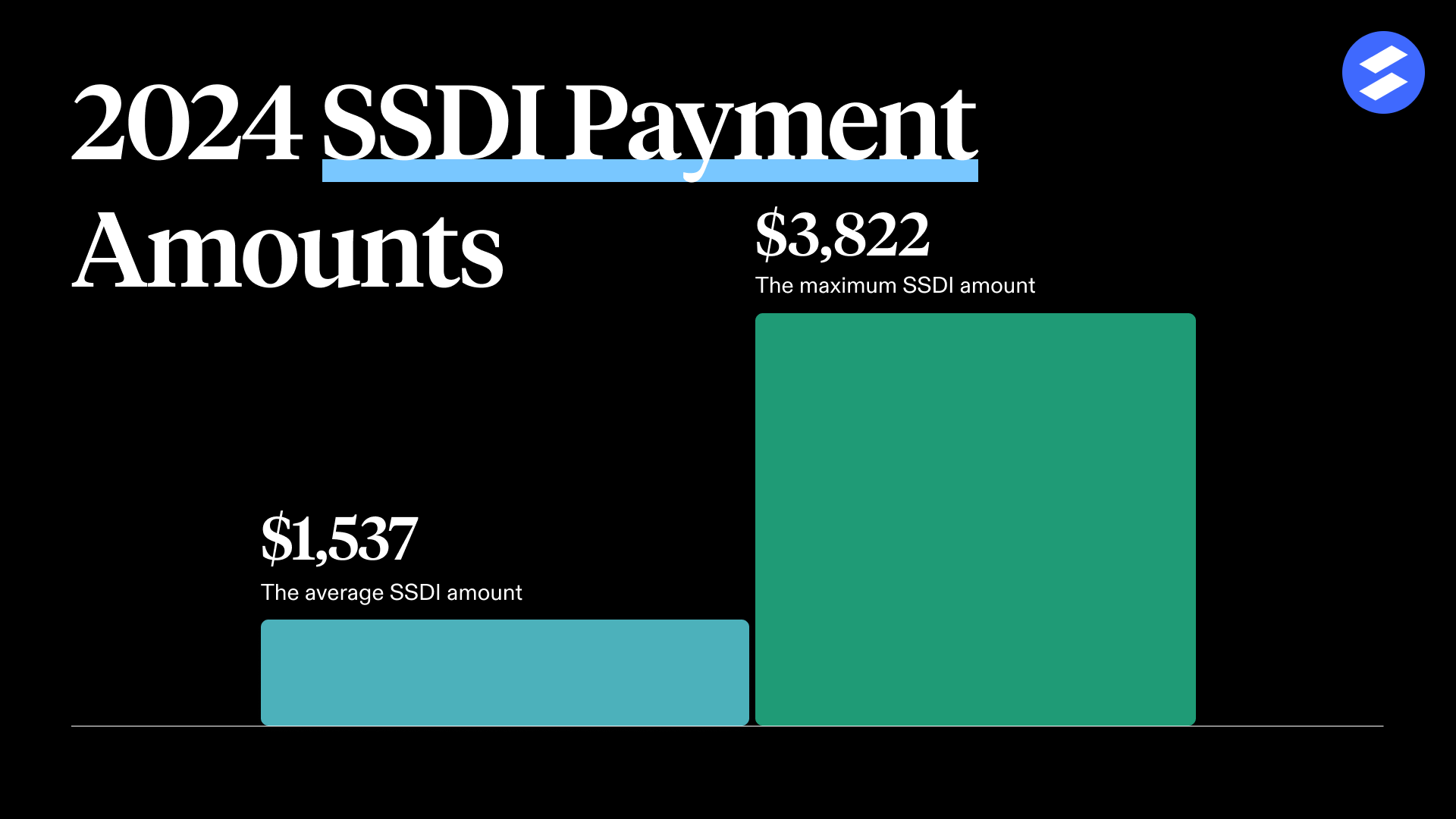Is Arthritis a Disability? How to Get Disability Benefits

Arthritis can be painful and debilitating, but is arthritis a disability?
If your arthritis prevents you from working, you may qualify for Social Security disability benefits.
In this article, we’ll go over how the Social Security Administration (SSA) defines arthritis, what factors impact your chances of getting benefits, and what you should do if you think you qualify.
What is arthritis?
Arthritis is a health condition involving inflammation or swelling of the joints. Arthritis isn’t a single disease—there are more than 100 types of arthritis and related conditions.
According to the 2019–2021 National Health Interview Survey, 21.2% of U.S. adults (53.2 million) have diagnosed arthritis.
Is arthritis a disability?
Yes, arthritis is a disability— but only if it’s severe enough to prevent you from working. The SSA lists several common types of arthritis, including facet arthritis, gout and pseudogout, osteoarthritis, psoriatic arthritis, rheumatoid arthritis, and spinal osteoarthritis, in its Listing of Impairments.
The SSA requires you to meet strict medical criteria to receive benefits for arthritis. Your best option is to work with a doctor (and likely a disability lawyer) to properly document your condition.
How the SSA classifies arthritis
The SSA doesn’t have a section dedicated to arthritis in their Blue Book (their reference guide for conditions that may qualify for disability). Instead, they mention some different types of arthritis under two separate listing categories: musculoskeletal disorders and immune system disorders.
Disability for osteoarthritis, spine osteoarthritis, and facet arthritis
These types of arthritis are discussed under the SSA’s listings for musculoskeletal disorders. Any condition where your skeletal spine pushes against a nerve route (facet arthritis) or pushes abnormalities of a major joint in the upper or lower body (osteoarthritis) can be considered a musculoskeletal condition eligible for disability.
Disability for inflammatory arthritis, rheumatoid arthritis, psoriatic arthritis, gout, pseudogout, and psoriatic arthritis
If your inflammatory arthritis involves your axial spine (psoriatic arthritis) or your peripheral joints (rheumatoid arthritis and psoriatic arthritis), you can qualify for disability if you demonstrate to the SSA that you’re unable to work as a result.
The SSA considers many types of inflammatory arthritis an immune system disorder. In these cases, they’ll evaluate whether you have difficulty walking or moving your joints, or suffer from joint pain, swelling, and tenderness.
How to get disability benefits for arthritis
Depending on the type of arthritis you have, the SSA has specific criteria your condition needs to meet.
In general, you need to prove, with medical evidence, that you have arthritis, and that your condition is keeping you from doing meaningful work.
If your arthritis belongs to the “musculoskeletal disorders” group:
The SSA will consider if you have difficulty using your upper and/or lower body because of your condition. This type of physical limitation must have lasted, or be expected to last, for at least 12 months continuously.
Some questions to ask yourself, and to answer in your disability application:
What kind of pain am I experiencing? Is it burning, aching, pins and needles, or something else?
What triggers my pain? What makes it worse?
Do I need to lie down because of my pain? During the day, how long do I need to lie down because of it?
How long can I stand at one time? How long can I walk at one time?
Do I need people to help with daily living activities like putting on shoes and brushing my hair?
Does my house need modifications to help me with my condition such as installing bars in the shower to help me stand?
The SSA will also need evidence that shows you have difficulty performing activities in a work environment compared to a home environment.
Let’s say you can walk for several hours at home without an assistive device. This doesn’t automatically mean you can do the same in a work environment, and this should be cleared up with medical evidence.
The SSA will also evaluate your case on whether you need assistive devices to complete your work, or whether your condition is so disabling that you can’t use both your upper and lower body to complete work-related activities.
If your arthritis belongs to the immune system disorders group:
First, you’ll need to prove if you have inflammatory arthritis like psoriatic arthritis, rheumatoid arthritis, or gout and pseudogout.
Then, the SSA will evaluate the severity of your condition. Your condition will qualify for disability benefits if it meets one of these criteria:
Persistent inflammation or deformity of one or more peripheral joints in either your upper or lower limbs, which prevents you from doing your work.
Inflammation or deformity of one or more peripheral joints in either your upper or lower limb, plus some constitutional symptoms (such as severe fatigue, fever, malaise, and involuntary weight loss) and complications in two or more organs/body systems.
Ankylosing spondylitis (this causes bones in the spine to fuse and makes the spine less flexible) or other spondyloarthropathies (chronic diseases of joints like psoriatic arthritis or reactive arthritis).
Repeated manifestations of inflammatory arthritis, with at least two of the constitutional symptoms above (severe fatigue, fever, malaise, or involuntary weight loss). You’ll also have to show limitations in your activities of daily living, social functioning, or ability to complete tasks in a timely manner.
Some other questions you can ask yourself and answer in your application:
If you have rheumatoid arthritis:
In addition to X-rays and MRIs, did I complete a blood test?
Do I experience pain in specific joints?
Do I have documentation of the condition progressing over time?
If you have psoriatic arthritis:
Do I suffer from chronic pain, stiffness, or limited range of motion?
Do I have labs performed by a rheumatologist?
If you have gout or pseudogout:
Do I have two or more organs or body systems affected by gout?
My arthritis meets the criteria. Now what?
If your arthritis meets the SSA’s criteria, your next step is to apply for disability benefits.
Typically, you’ll either apply for Social Security Disability Insurance (SSDI) or Supplemental Security Income (SSI). SSDI is assessed based on your work history, and SSI is based on your income. Learn more about whether you qualify for SSDI or SSI.
Even if you aren’t sure whether you meet all the medical requirements, you can still apply. There is no harm in applying as long as you complete the application honestly.
To easily determine whether you qualify for benefits, take our free two-minute quiz. We’ll use your answers to match you with one of our client advocates, who can give you free, personalized legal advice.
We can also pair you with a vetted disability lawyer. There are no upfront costs, and if you choose to work with a lawyer, you’ll only pay them if you win your case.
What if my arthritis doesn’t meet the criteria?
While the SSA’s criteria may seem strict, you don't necessarily have to check every box in order to receive benefits. The important thing is to prove your arthritis is severe enough to prevent you from working. If you don’t think you meet all the criteria, you should still apply.
You can appeal if the SSA denies your initial application (which happens to 80% of applicants). When you appeal, you’ll have an opportunity to argue your case in front of a judge. Your chances of winning are much higher at this stage—nearly half of applicants get approved.
How much is a disability check for arthritis?
The average disability check is $1,665.14. If your arthritis qualifies for disability benefits, you can get up to $3,822 per month from SSDI, and up to $943 per month from SSI in 2024.
The maximum amounts for SSDI and SSI are set by law and are the same for every condition. How much you’ll actually get depends on your case. Some people can also qualify for and receive both payments.

3 tips when applying for disability with arthritis
There are a few things you can do to increase your chances of winning your disability claim:
Pay attention to how your condition affects you in a home vs. a work environment. You may be asked questions on how your arthritis limits your daily functional activities vs. your work activities.
Ensure your medical records are complete and clearly show the symptoms and (if available) complications of your arthritis. Work closely with your doctor to gather the required documents for your application.
Work with a good disability attorney to maximize your likelihood of success, especially if you’re not sure whether your condition meets the SSA’s criteria. People who work with a lawyer are three times more likely to win their disability case.
Other conditions that can qualify for disability:
Inflammatory bowel disease (IBD) | OCD (obsessive-compulsive disorder) |
Related resources:
How Rheumatoid Arthritis Can Qualify for Disability Benefits
How Osteoarthritis Can Qualify You for Disability Benefits
How long has your condition made it hard to work?

Jackie Jakab
Lead Attorney
For Clients
For Lawyers
At the bottom of many websites, you'll find a small disclaimer: "We are not a law firm and are not qualified to give legal advice." If you see this, run the other way. These people can't help you: they're prohibited by law from giving meaningful advice, recommending specific lawyers, or even telling you whether you need a lawyer at all.
There’s no disclaimer here: Atticus is a law firm, and we are qualified to give legal advice. We can answer your most pressing questions, make clear recommendations, and search far and wide to find the right lawyer for you.
Two important things to note: If we give you legal advice, it will be through a lawyer on our staff communicating with you directly. (Don't make important decisions about your case based solely on this or any other website.) And if we take you on as a client, it will be through a document you sign. (No attorney-client relationship arises from using this site or calling us.)
- This website is lawyer advertising.
- Cal. Bar #23984
- © 2024 Atticus Law, P.C.
Terms | Privacy | Disclaimer